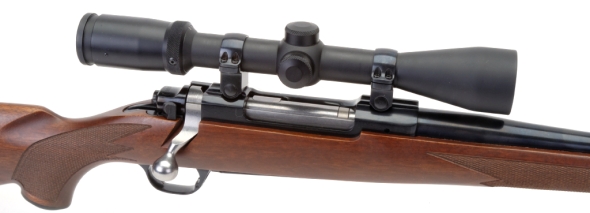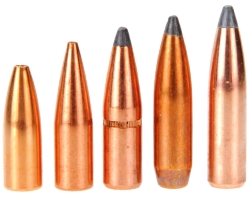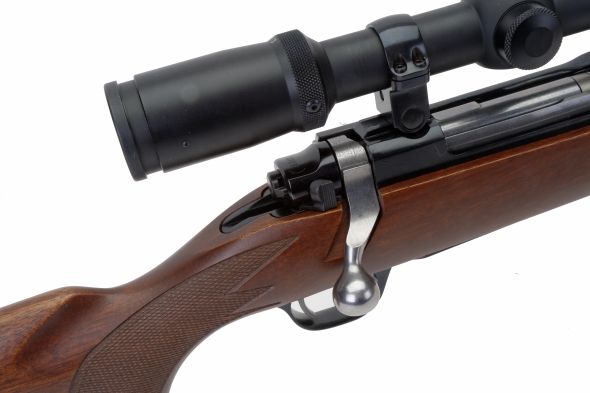
The Part 1 retrospective long and winding road…

The plan was to check out the Ruger Hawkeye with factory ammunition in deer hunting weights and then to add some handloads based on the five bullet posing to your left.
| Bullet | Weight Grains |
Type | Measured Length |
| Sierra Varminter #1800 | 90 | HP | 0.852 |
| Hornady #2720 | 110 | HP | 1.008 |
| Hornady Interlock #2730 | 130 | SP | 1.108 |
| Sierra GameKing #1845 | 140 | SPBT | 1.190 |
| Nosler Partition #16323 | 150 | SP | 1.262 |
The first two bullets were defined as varmint class, the next two as medium game, deer, construction and the last as Bullwinkle ready. Enough ammo was to be loaded to qualify accuracy and velocity and maybe chart some of the exterior ballistics.
It went a bit like this…

Lemme see… There were no compressed loads. Some close, but none I would consider compressed. The Hornady cannelure is a little high, but then the brass came in a little low… about 0.020″ which is a moot point as the rounds are not roll crimped. I did run the seater die in to just touch the case mouth to make sure they conformed to bullet shanks.
Powder was juggled for the best results with the Ruger’s 22″ barrel, which makes for a funny visual as a literal interpretation. In the end, no flat primers, no tattooed headstamps, no hard extractions, no other signs of excessive pressure other than about near the safe end of velocity and loudness of report. Even though velocity varies with powder type within the same bullet weight, I still feel they are all maximum loads for this specific rifle, component lots and Maine weather. The combination of rifle and round seemed to like Alliant Re17 and Norma MRP, although it got along just fine with the other powders indicated.
I did run some control checks with Prvi factory ammo, 130 and 150 grain soft points. With the exception of an anomaly where one set came within 2 fps of one another, the 130 grain round was 31 fps faster than the 150 grain; both were snooze slow but deer hunting effective with certainty.
 |
Warning: Bullet selections are specific, and loads are not valid with substitutions of different bullets of the same weight. Variations in bullet length will alter net case capacity, pressure and velocity. Primer selection is specific and primer types are not interchangeable. These are maximum loads in my firearms and may easily be excessive in others. All loads should be reduced by 5%, and developed following safe handloading practices as represented in established reloading manuals produced by component manufacturers. Presentation of these loads does not constitute a solicitation for their use, nor a recommendation.
|
||||||||||||||||||||||||||||||||||||||||||||||||||||||||||||||||||||||||||||||||||||||||||||||||||||||||||||||||||||||||||||||||||||||||||||||||||||||
|
|||||||||||||||||||||||||||||||||||||||||||||||||||||||||||||||||||||||||||||||||||||||||||||||||||||||||||||||||||||||||||||||||||||||||||||||||||||||
Shooting off a rest was comfortable. The recoil pad was OK, but could have been a little more resilient rather than classic after a dozen rounds or so. The 22″ barrel gave the Hawkeye a bit of a bark, but it certainly didn’t hamper accuracy and it produced decent ballistics. Everything stayed in place, the Hawkeye cycled, fed and ejected cleanly.
Are there things that could be improved? Considering the number produced, sold and in the hands of successful hunters, criticism might seem a bit pretentious. Still, that little more resilient recoil pad and a clean adjustable trigger would be nice and the extent of any wish list. More importantly, The Ruger Hawkeye handles and shoots like a classic hunting rifle, a type of firearm enthusiasts sorely need.


Email Notification